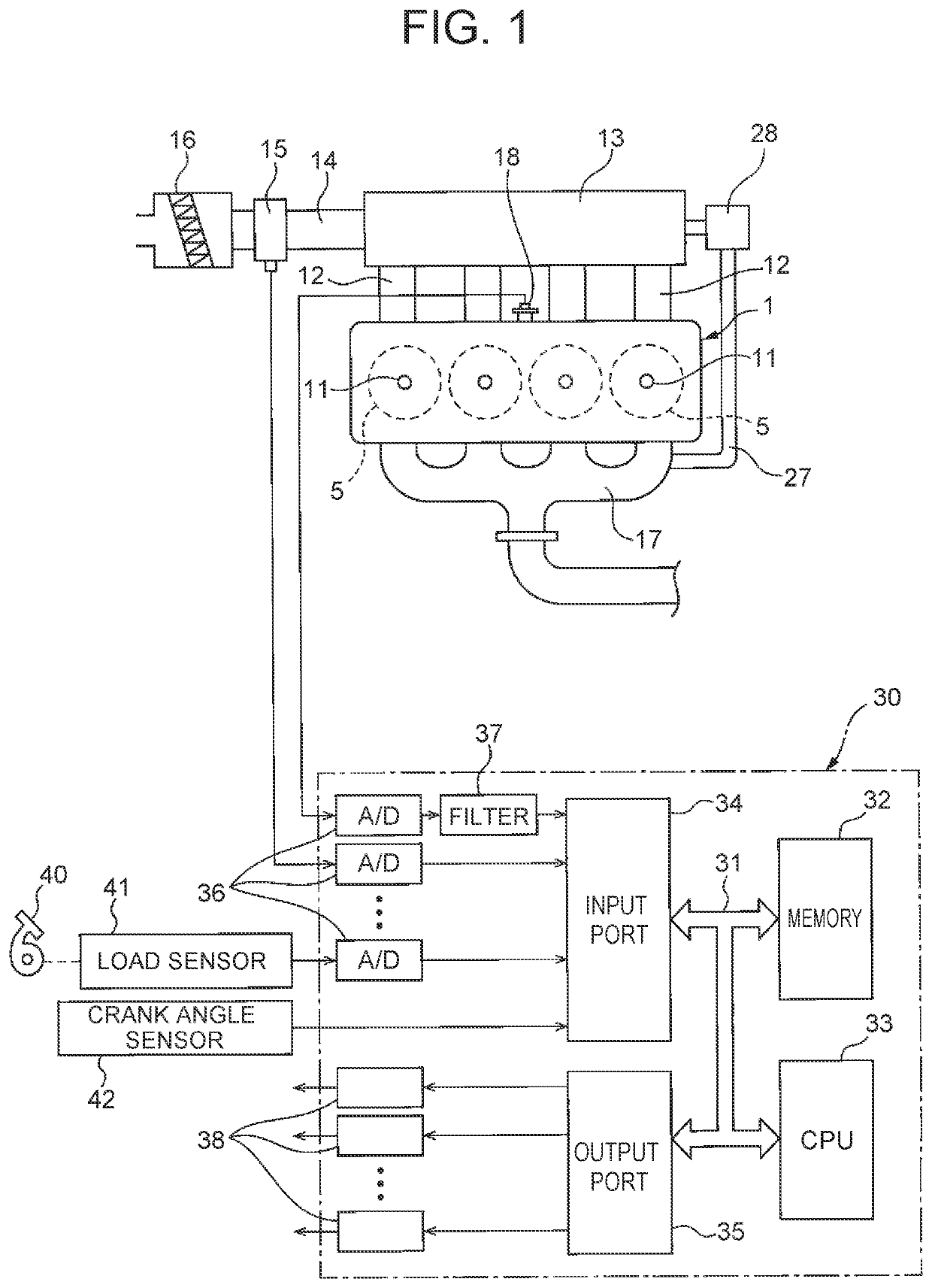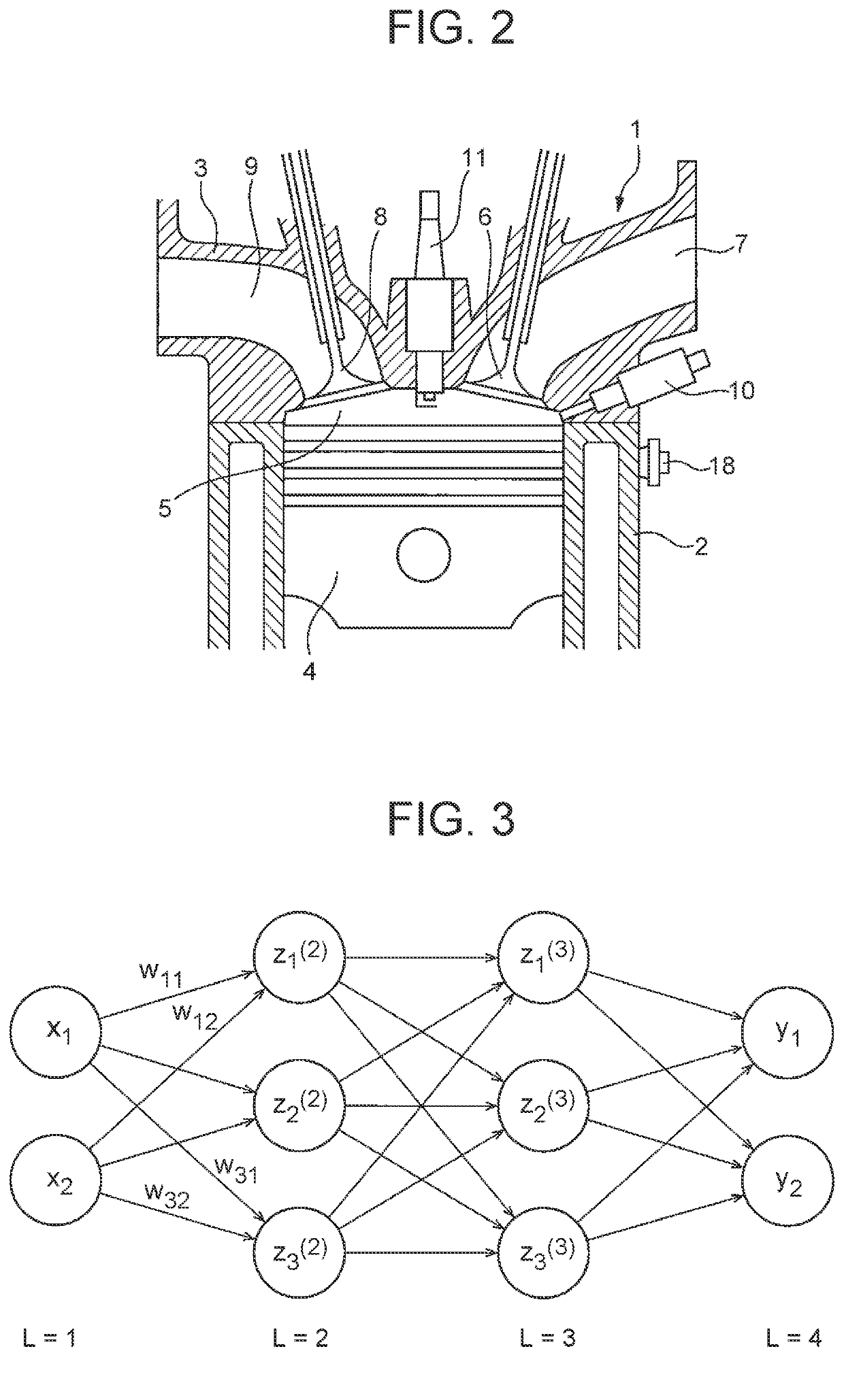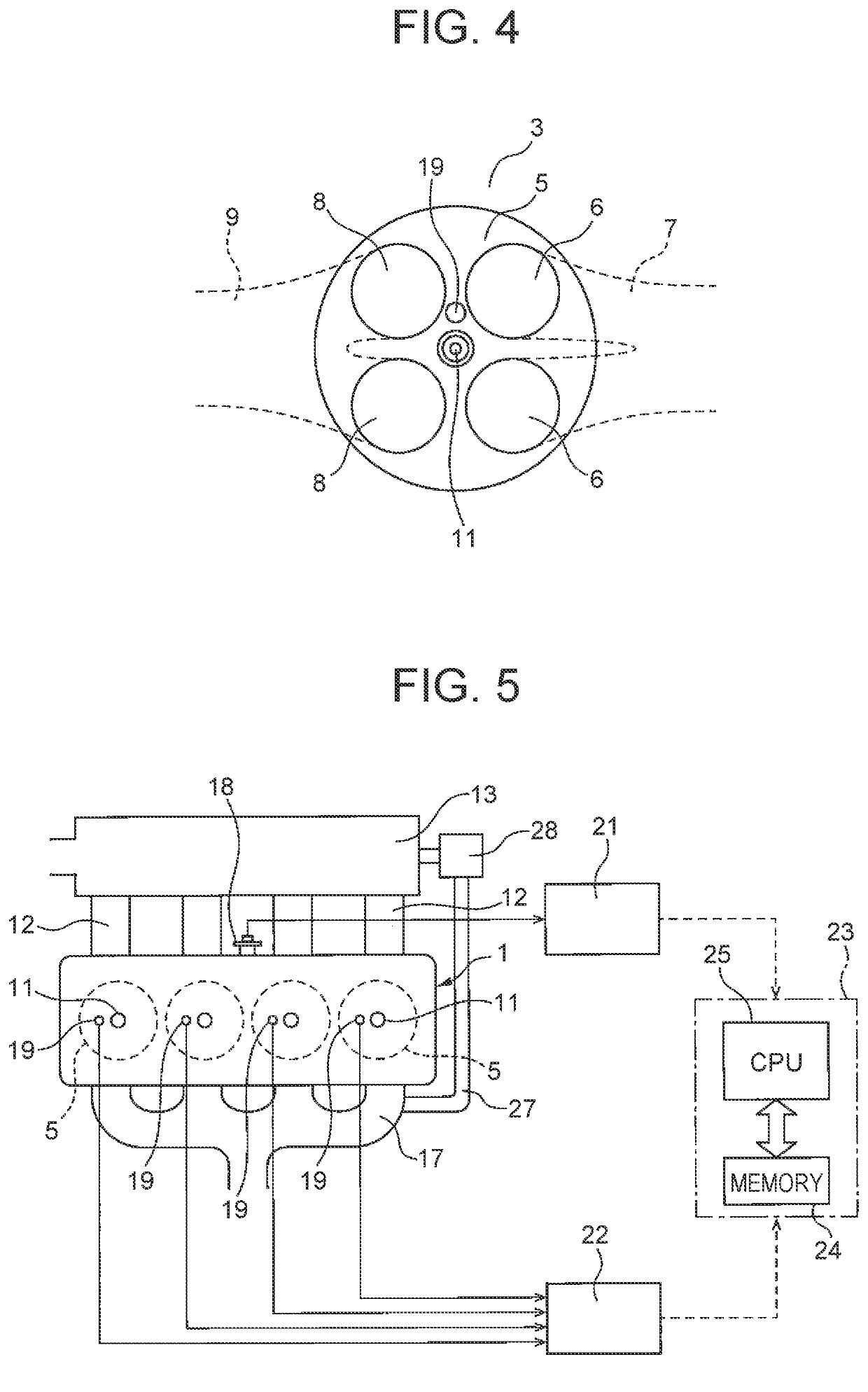Ignition timing control device for internal combustion engine
a technology of ignition timing control and internal combustion engine, which is applied in the direction of electric control, ignition automatic control, instruments, etc., can solve the problems of engine body vibration, pressure wave generation, knocking, etc., and achieve the effect of preventing excessive ignition timing delay and high accuracy
- Summary
- Abstract
- Description
- Claims
- Application Information
AI Technical Summary
Benefits of technology
Problems solved by technology
Method used
Image
Examples
first embodiment
[0174]FIG. 29 shows a training dataset for learning the weight of the second neural network 50. In the first embodiment, the training dataset is prepared by extracting, from the table shown in FIG. 28, the data relating to the engine speed NE, the engine load L, the EGR rate ER, and the ignition timing delay amount α in a cycle when ignition timing is delayed by the delay amount α, and the data relating to the estimate yeo of the value representing the knocking intensity in the cycle immediately before the cycle when the ignition timing is delayed by the delay amount α. The training dataset is made up of m pieces of data indicating the relationship between the input values xx1, xx2, xx3, xx4, xx5 and the teacher data yt extracted from the table shown in FIG. 28. In this case, the engine speed NE, the engine load L, the EGR rate ER, the ignition timing delay amount α, and the estimate yeo of the value representing the knocking intensity in the previous cycle shown in FIG. 28 are set ...
second embodiment
[0199]FIG. 37 shows a training dataset for learning the weight of the recurrent neural network shown in FIG. 35. In the second embodiment, the training dataset is prepared by extracting from the table shown in FIG. 28 partial data over all the cycles, i.e., only the estimates ye of the values representing the knocking intensity output from the first learned neural network 20 and the delay amounts α or advance amounts β of the ignition timing. In this case, in the training dataset, the estimate ye of the value representing the knocking intensity output from the first learned neural network 20 in a next cycle is set as a predictive value yee of the estimate ye of the value representing the knocking intensity. The predictive value yee of the estimate ye of the value representing the knocking intensity is used as the teacher data yt.
[0200]For example, in a cycle kn in FIG. 37, an estimate yen of the value representing the knocking intensity output from the first learned neural network 2...
PUM
 Login to View More
Login to View More Abstract
Description
Claims
Application Information
 Login to View More
Login to View More - R&D
- Intellectual Property
- Life Sciences
- Materials
- Tech Scout
- Unparalleled Data Quality
- Higher Quality Content
- 60% Fewer Hallucinations
Browse by: Latest US Patents, China's latest patents, Technical Efficacy Thesaurus, Application Domain, Technology Topic, Popular Technical Reports.
© 2025 PatSnap. All rights reserved.Legal|Privacy policy|Modern Slavery Act Transparency Statement|Sitemap|About US| Contact US: help@patsnap.com



